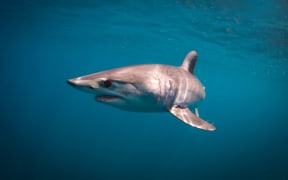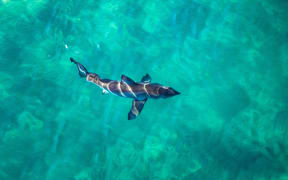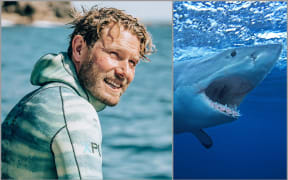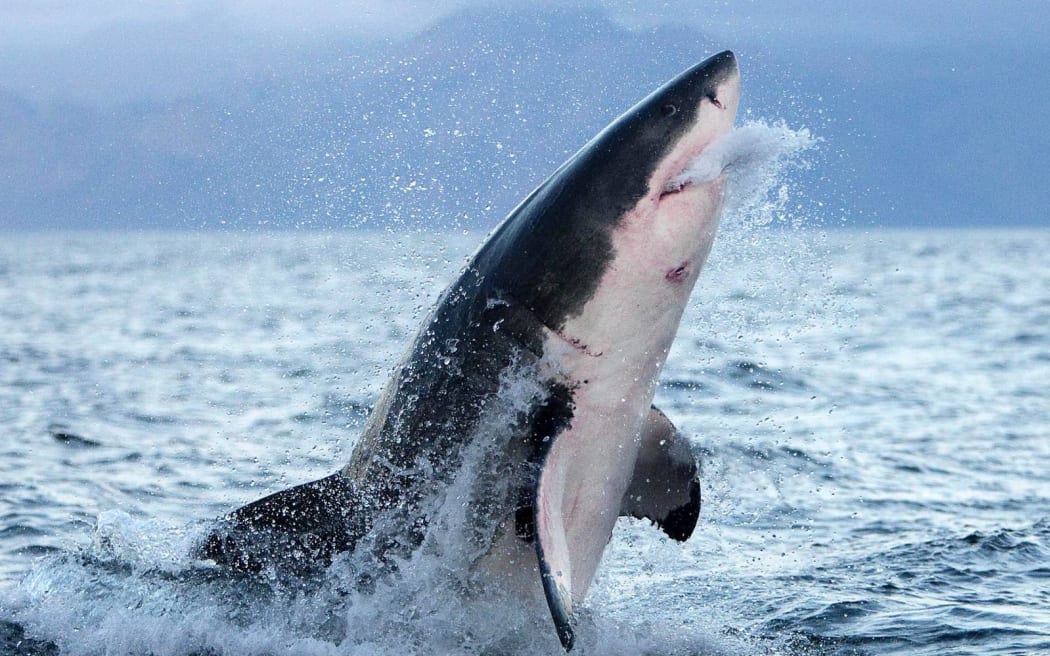
A great white shark. Photo: Gerard LACZ
Imagine trying to find a needle in a haystack, but the needle is a six-inch black satellite transponder and the haystack a beach covered in black mussel shells.
That is the situation faced by Australian shark researchers, who are relying on eagle-eyed Kiwis in the deep south to find the valuable teardrop-shaped device.
"About a week ago we had a quick email from Paul of the New South Wales Fisheries Department in Australia," Nikki Ladd of Shark Experience in Bluff told RNZ.
"He said, 'Hey, is this near you?' And he had a satellite drop tag which was disconnected from a great white shark near Yankee River on Stewart Island.
"And we then proceeded to watch that over the next few days travel through the Foveaux Strait, and in the last sort of 48 hours that has landed on shore at Fortrose, which is one of the Southland's special secret places that we go to with lovely beaches and amazing views. So it's currently lodged on a secret beach at Fortrose."
The tags are attached to the shark's back, giving scientists data on where they go. Australian scientists were tracking about 1200 sharks, Ladd said, collecting "information about the distance, speeds, where that shark has been - more than what the satellite tracking would actually show".
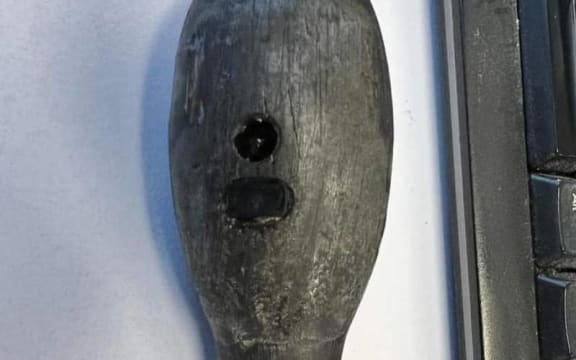
The shark tag is missing somewhere on a beach in the Catlins. Photo: Supplied
The shark in this instance was a great white.
"From the tagging that's been done previously by the Department of Conservation, we know that they can go all sorts of places. Some of them head up north to the islands, apparently nice tropical zones. Some of them do head back, and we know from DNA research that's been done on our sharks that they do have cousins and ties to the eastern coast of Australia, so we know that those relationships exist.
"But as technology gets better and better and better, these tagging systems will allow scientists to actually track them down."
This particular tag is no longer attached to a shark. They know this because the data it has sent to satellites puts it in a 300-400m triangular range on a "stunning" beach. It is sitting out in the open too, scientists able to monitor its temperature changing as the sun rises and falls.
"These lovely devices are usually about five to six inches long. They're black. They're not pear-shaped, but they're of that nature, and they have a little aerial. So we're not too sure if the aerial's on this particular one anymore, but usually probably quite easy to spot on a beautiful sandy beach.
"But the lovely beach it's on has got a few rocks and hundreds and thousands of black mussel shells - so it blends in a little bit. There's been a good few hard hours spent looking for it among debris."
The beach is also only accessible at low tide, Ladd said, complicating matters.
"Low tide today was 4pm at that spot and tomorrow it'll be a little bit later, so we'll just keep going until we find it."
She said anyone was welcome to pitch in.
"It's like the best geocaching kind of event you've ever come across in your life. And we'll be back out there tomorrow night doing it as well, so if anyone's travelling through the Catlins South and they want something fun to do, check out the maps and the screenshots we've currently got on our Facebook page. We need all the hands we can.
"But we just ask people to only go at low tide because that beach is not accessible any other time, so we need to do it safely. Low tide at Fortrose, check out the map. It's right there somewhere."
Sharks frequently crossed the Tasman to enjoy the cooler Southland waters, Ladd said.
"I'm not as water stable as the rest of our amazing crew, so I get to sit on land and actually look at all the videos that we collect, through hours and hours of them, as part of collecting our ID program - so I feel like I have this intimate bond because I watch hours and hours of them on screen… but the team on the boat get to know them very well and we get quite passionate about them."
They start arriving late in the year, she said, at first mostly males.
By the end of March, we're seeing the bigger sharks, and then the ladies arrive - or the big girls as we call them - they're much more impressive in size and they play an important part, because we believe that they're here to breed."
By June, Shark Experience's big attraction - meeting sharks up close in underwater cages - cools off for the winter, but not just for a lack of sharks.
"Our reason for going out there is to introduce humans to them, and the humans can't quite handle the Foveaux Strait on a gnarly day, so we don't want to put them through that."

